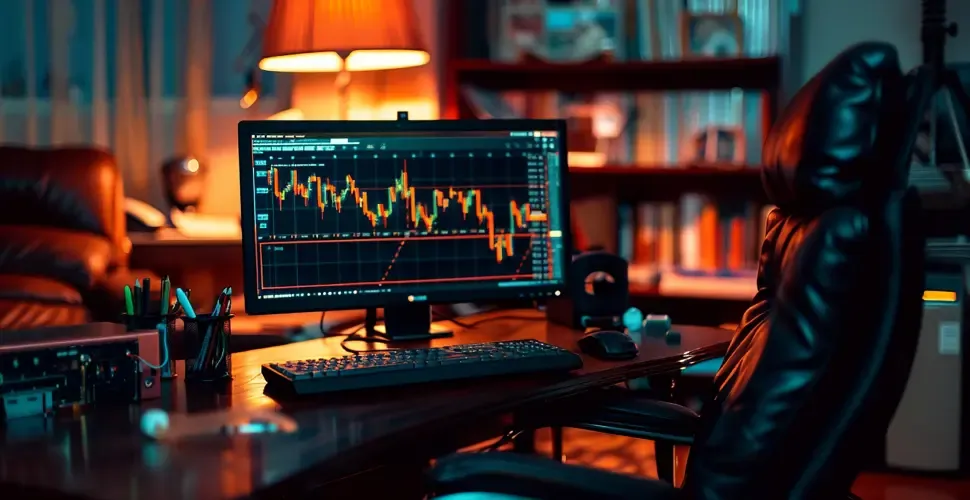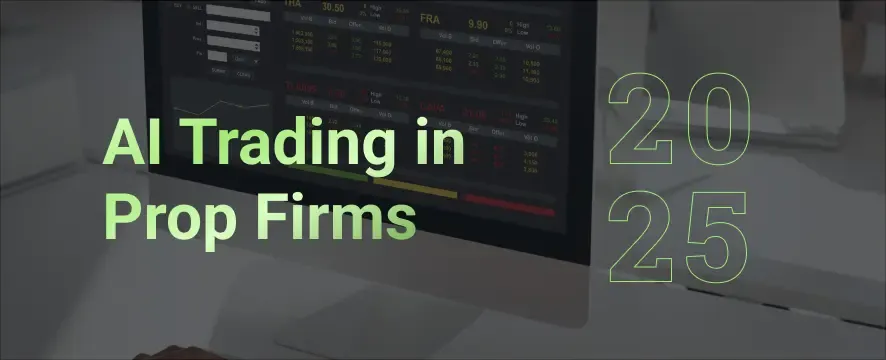
18 min read
Funded Trading Accounts Explained: Types, Benefits & How to Get One
A funded trading account gives you access to a firm’s capital to trade, share profits, and reduce personal risk.
6 min read
Share
In this article, we cover the risk-to-reward ratio in Forex trading and how to trade safely and effectively.

If you’ve been learning about Forex trading for any length of time or currently trade yourself, you have likely at least heard the term ‘risk-to-reward ratio.’
Risk-to-reward is one of the fundamental principles of effective risk management, but also one of the most neglected.
In this article, we will cover the concept of risk-to-reward in more detail and explain how you can effectively implement it into your Forex trading to trade safely and effectively.
So, what exactly is the risk-to-reward ratio in Forex trading? Simply put, it's a comparison between the potential loss and the potential gain of a trade.
But how exactly is this ratio calculated?
The risk-to-reward ratio is determined by dividing your potential profit by your potential loss. For example, if you're risking $100 to potentially gain $300, your risk-to-reward ratio would be 1:3. Likewise, if you are risking $500 to potentially make $6000, your risk-to-reward ratio is 1:12, which is a much better risk-to-reward ratio than 1:3.
This concept is a fundamental aspect of Forex risk management, helping traders make more informed decisions about their trades. By understanding what the risk-to-reward ratio is, you're taking a crucial step toward more strategic and potentially profitable trading.
You might be wondering, “Why should I care about this ratio, and how does it impact my trading?” Well, understanding and applying the risk-to-reward ratio is crucial for several reasons:
• It helps you make more informed trading decisions
• It's a key component of effective trading strategies
• It can help minimize trading losses while potentially maximizing profit
When you use the risk-to-reward ratio to enter trades, you are able to make more calculated trading decisions and essentially decide if the reward (profit) is worth the potential risk (loss).
This approach is (or should be) at the heart of a successful Forex trading strategy.
In fact, if you have a trading strategy with a high risk-to-reward ratio, you can potentially even have more losing than winning trades and yet still come out profitable. In an ideal scenario, you want to risk as little money as possible to make as much money as you can – while still being right often enough to make money.
Ready to learn how to calculate the risk-reward ratio?
Let's break it down with a hypothetical example:
• Assume your entry point is 1.2000
• Set your stop loss at 1.1980
• Set your take profit level at 1.2040
• Calculate the risk: 1.2000 - 1.1980 = 20 pips
• Calculate the reward: 1.2040 - 1.2000 = 40 pips
• Divide the reward by the risk: 40/20 = 2
In this case, your risk-to-reward ratio would be 1:2.
Using this ratio, you can set your stop loss and take profit levels more effectively, ensuring that your potential gains outweigh your potential losses.
However, the key to using the risk-to-reward ratio effectively is consistency. Apply it to all your trades as a rule – not just when you think it is important.
Although there is no one-size-fits-all approach, some common risk-reward ratios in Forex include:
1:2 – A decent starting point for many Forex traders
1:3 – Often considered the ‘golden ratio’ in Forex
1:5 – More common for longer-term trading (swing/position)
Remember, the best risk-to-reward ratios for Forex can vary depending on your trading style. Day traders might prefer tighter ratios, while swing traders might opt for wider ones.
It's important to note that different trading styles may use different ratios.
For example:
• Scalpers might use tighter ratios like 1:1.5 due to the quick nature of their trades
• Day traders often aim for ratios between 1:2 and 1:3
• Swing traders might look for higher ratios like 1:3 or even 1:5
• Position traders could aim for even higher ratios, sometimes 1:10 or more
The key is finding a ratio that suits your trading style, risk tolerance, and the prevailing market conditions, but still offers enough potential payout for the risk you take.
Effectively balancing risk to reward is at the heart of an effective trading strategy. However, the risk-to-reward ratio is only one component of having a good risk-to-reward strategy. The following are also vital components of managing risk:
• Always use stop-loss orders to limit potential losses
• Don't risk more than 1-2% of your account on any single trade
• Use take-profit orders to take profits when a trade moves in your favor
• Limit leverage to reduce potential losses
• Diversify your trades across different currency pairs
By combining these strategies with a solid understanding of risk-to-reward ratios, you can trade both safely and effectively.
Remember, the goal of risk management isn't to eliminate risk entirely (which is impossible) but to manage it in a way that allows for profitable trading over the long term.
Even experienced traders can occasionally make mistakes when using the risk-to-reward ratio.
Some common trading mistakes include:
• Aiming for unrealistic ratios (like 1:10 on short-term trades)
• Not adjusting ratios based on market conditions
• Ignoring the ratio altogether in favor of "gut feelings"
• Completely ignoring the probability of a success (in addition to the risk-to-reward ratio)
By being aware of these risk-reward mistakes, you can avoid falling into these common traps.
Remember, successful Forex trading is as much (if not more) about good risk management as it is about placing the right trades.
Understanding and applying a good risk-to-reward ratio is crucial for safer, more effective Forex trading. By carefully balancing potential risks and rewards, you can make more informed trading decisions and improve your overall trading strategy.
Remember, successful Forex trading isn't about winning every trade - it's about ensuring that when you win – you win big, and when you lose – you lose small.
The risk-to-reward ratio is a powerful tool to help you achieve this balance.
Effectively incorporating the risk-to-reward ratio into your trading routine might take some time and practice, but it will be well worth the effort. When implemented correctly, it will help you win bigger and lose smaller, ultimately resulting in more consistent trading returns over the long term.

18 min read
A funded trading account gives you access to a firm’s capital to trade, share profits, and reduce personal risk.

12 min read
Yes, some prop firms allow news trading. This 2025 guide shows which firms permit it, their rules, and how traders can benefit.

10 min read
A funded trader uses a prop firm’s capital instead of their own. Learn how funded accounts work, profit splits, and how to qualify.

13 min read
To become a funded trader in 2025, you must pass prop firm challenges by mastering strategy, risk control, and trading rules.

9 min read
Discover effective AI trading strategies for prop firms to enhance your profits. Learn practical tips to navigate the market successfully. Read more!
Get an insight from other users about SeacrestFunded and their experiences. 131K+ members and counting

Get instant access to weekly newsletter.